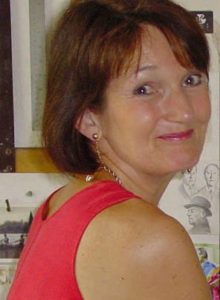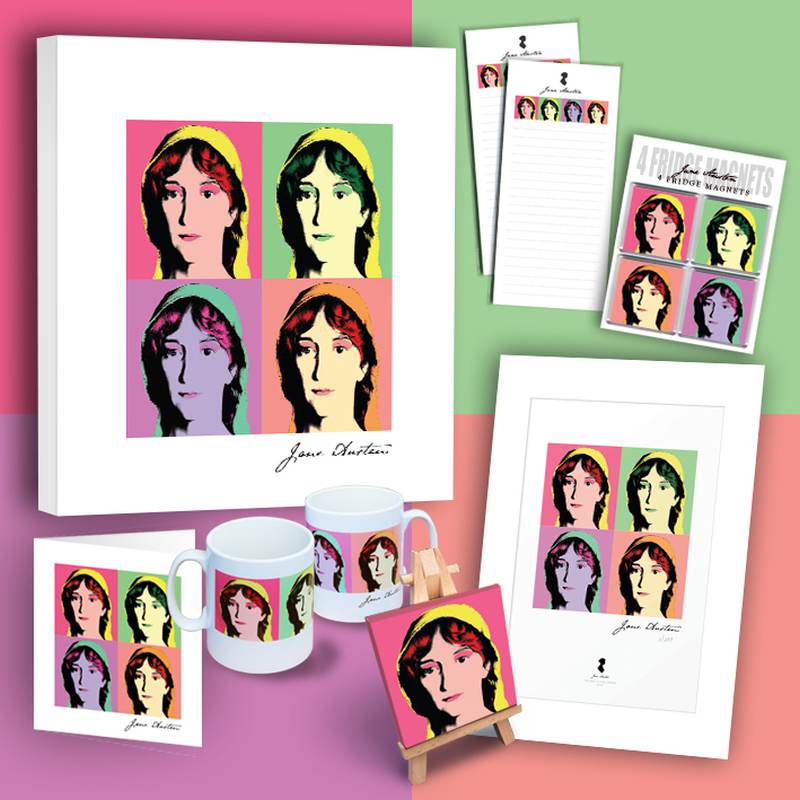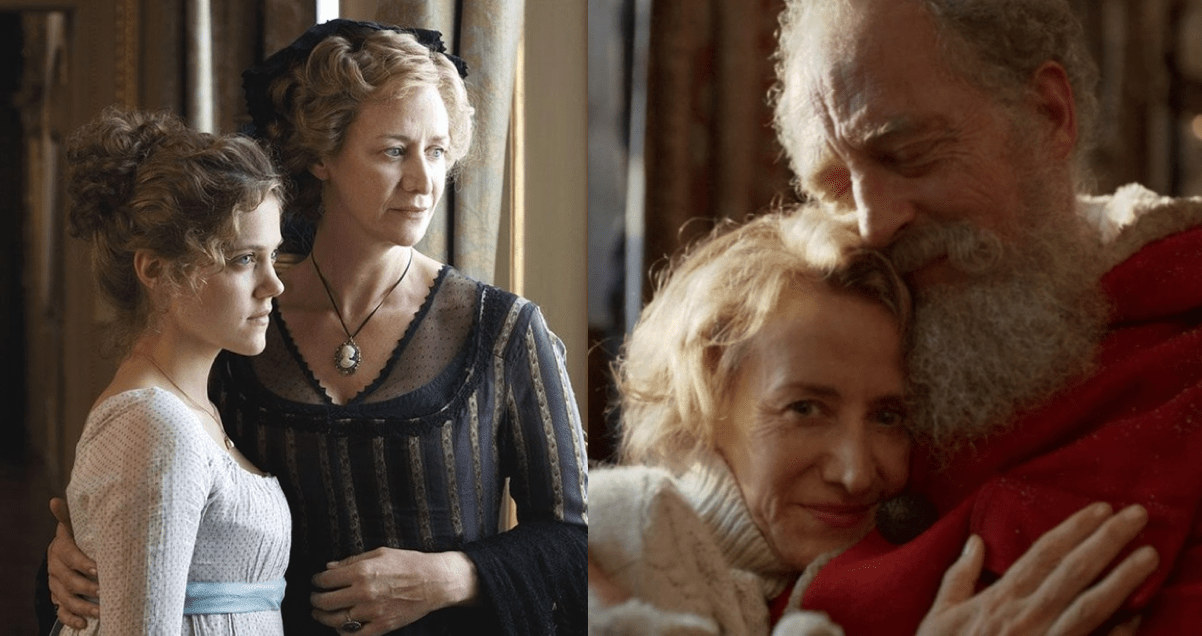How Melissa Dring created her forensic Austen Portrait
The New Jane Austen Portrait using source material and forensic methods

Introduction: In 2001, Melissa Dring* was commissioned by David Baldock, the Director of the Jane Austen Centre, Bath, to produce a new portrait of the author, as she might have appeared during her time in Bath, 1801-06. Combining the insights of the professional portrait painter with those of the police forensic artist, Melissa was uniquely qualified to accept this challenge. David Baldock had heard of her work on a speculative likeness of the Venetian composer Antonio Vivaldi. A film producer, wanting a likeness to use as a casting aid for a proposed film biography of the composer, and feeling it was a job for a forensic artist, had approached Scotland Yard, who recommended Melissa. The difficulty with both commissions was their shared lack of reliable contemporary portraiture, although a wealth of written eye-witness accounts survive in both cases.
Melissa Takes up the story...
My new speculative likeness of Jane Austen fills the gap left by the paucity of authenticated representations of the author. As I hope it will come to be accepted as a good portrait of her, despite being made 185 years after her death, I will describe the research and working methods I used, so that it can be seen how it is based almost entirely on solid fact, and how little guesswork was needed. There is a tiny pencil and watercolour sketch of her, in the National Portrait Gallery in London, by her amateur artist older sister, Cassandra, and a steel engraving made from it years later, which attempts to soften Cassandra’s dour account, but according to one observer, Jane’s face was never so broad and plump.
Cassandra, somewhat unhelpfully, also painted a back view of Jane, and there are two silhouettes, so popular in her day, one of which is said to be a self portrait. Tantalisingly, there are no other undisputed likenesses of Jane. We have her parents portraits and all but one of her siblings, including no less than three quite good portraits of her young brother, Francis, of whom an interesting daguerrotype also exists, showing him as an old man. The natural starting point, then, had to be Cassandra’s sketch, which I reversed, as I decided to have Jane looking the other way, and also I needed to make her look a few years younger. Cassandra drew Jane at 35, and I had to make her aged 26-31, during her years in Bath. Above all, though, I wanted to bring out something of Jane’s lively and humorous character, so evident in her novels and all contemporary accounts of her. Cassandra’s drawing may have been quite like Jane physically, but has failed to catch her sparkle.
'We cannot ever know exactly what she looked like, and the likeness has to remain, in part speculative, but I feel that there’s a distinctly sporting chance that I can’t be too far wrong.'
Melissa Dring
 For the New Jane Austen portrait, I have given Jane the Austen family look which all her siblings shared, the bright eyes, long nose, small, narrow mouth. She has the brown curly hair, so like her father’s at her age, also his hazel eyes, small mouth, the family nose and healthy complexion. A nephew described her as a clear brunette with a rich colour, and another observer her doll like rosy cheeks. Incidentally, at this point in Bath, Jane was still mercifully years away from the onset of the Addison’s disease which eventually killed her. The skin discolouration which she suffered as one of its symptoms can be completely eliminated from the equation. Her brother Henry wrote that she had true elegance, so I am convinced she held herself well, with slim upright posture, though this was unkindly referred to as poker like by one acquaintance.
For the New Jane Austen portrait, I have given Jane the Austen family look which all her siblings shared, the bright eyes, long nose, small, narrow mouth. She has the brown curly hair, so like her father’s at her age, also his hazel eyes, small mouth, the family nose and healthy complexion. A nephew described her as a clear brunette with a rich colour, and another observer her doll like rosy cheeks. Incidentally, at this point in Bath, Jane was still mercifully years away from the onset of the Addison’s disease which eventually killed her. The skin discolouration which she suffered as one of its symptoms can be completely eliminated from the equation. Her brother Henry wrote that she had true elegance, so I am convinced she held herself well, with slim upright posture, though this was unkindly referred to as poker like by one acquaintance.
The verifiable elements of the new Jane Austen portrait, the costume, desk and writing equipment are all authentic. The cap was, as Sue Ralph of Bath’s own Museum of Costume told me, “essential undress wear” and it is known that Jane was rather old fashioned in her ways. Austen Leigh recalls Jane at Chawton in 1808, saying that,
“She was never seen, either morning or afternoon, without a cap”
He also thought that both Jane and Cassandra had, “taken to the garb of middle age earlier than their years or looks required”. This sounds a touch old-maidish, and yet Jane took a keen interest in fashion, writing to her sister for instance, whilst on a visit to their brother Henry in London that she had, “watched for veils as they drove through the streets, and had the pleasure of seeing several upon vulgar heads!” The precise type of cap and the pattern for the style of muslin dress, fashionable at the time, I found at Berrington Hall in Herefordshire with the kind help of Althea MacKenzie, the curator of the National Trust’s collection of costumes housed there. In a darkened room, she opened box after box of fragile C18th dresses for me to see, all of the right period for Jane’s time in Bath. I chose a blue spotted muslin dress because I wanted one that I could adapt easily to Jane’s own choice of fabric, detailed in another of her letters to Cassandra, “I was tempted by a pretty coloured muslin and bought ten yards of it, but at the same time, if it should not suit you, you must not think yourself at all obliged to take it, the pattern is a small red spot”. Althea also advised me about the style of corsetry Jane would have worn to give her the right degree of, literally, straight-lacedness and ramped up bosom so typical of her times.
 The topaz cross on the gold chain can be seen at Chawton, and was one of a pair that the youngest of the naval brothers, Charles, bought for his sisters with his prize money after taking part as lieutenant on the ‘Endymion’ in a successful engagement with a privateer ‘La Furie’. Jane wrote to thank and scold him, telling him, “of what avail is it to take prizes, if he lays out the produce in presents for his sisters?”, adding that they would be now, “unbearably fine!”
The topaz cross on the gold chain can be seen at Chawton, and was one of a pair that the youngest of the naval brothers, Charles, bought for his sisters with his prize money after taking part as lieutenant on the ‘Endymion’ in a successful engagement with a privateer ‘La Furie’. Jane wrote to thank and scold him, telling him, “of what avail is it to take prizes, if he lays out the produce in presents for his sisters?”, adding that they would be now, “unbearably fine!”
The new Jane Austen portrait shows Jane at the time she lived and worked in Bath, suffused with a gentle ambient glow of pale golden Bath stone. The lighting is classical eighteenth century; indoors, mellow, lit from top left, suggesting a tall Georgian window just out of sight to her side. Poised at her desk, her pen and spectacles to hand, this is Jane in her writing environment.
The actual mahogany slope she always used is in the Treasures Gallery in the British Library, where I was able to make sketches and calculate measurements. It was fascinating to see, not only her spectacles in the half open drawer, but where she had evidently absent mindedly stabbed her pen at the inkwell, and missed, leaving multiple tiny inky holes in the wood beside it. The Victoria and Albert Museum helpfully supplied the information that steel pens were not invented until 1839, so of course Jane wrote with a quill. It would most probably have been a goose feather, with all unnecessary fletching stripped away. Jane wrote on small loose sheets of paper and would hastily hide them if anyone approached.
Which brings us on to discussing her character, an understanding of which is so vital for a lifelike portrait. She was a very private, secretive person. The graphologist, Patricia Field, is convinced she had “a reclusive nature which she deduces from the tight page filling, and that she was “an obsessive compulsive” from the “extreme connection of her writing”, and had a “preoccupation to safeguard secrets”, using her “wit and wisdom” as weapons for her self-protection. Jane was also extremely practical, apparently giving instructions that the squeaky door beyond which she customarily sat writing, should never be oiled.
She was a romantic, but not at all sentimental. There was an earthy, unsqueamish realism about Georgian England, and the George on the throne was ‘Farmer George’, and Jane herself knew all about killing the family pig, brewing beer, and her nieces’ fleas, all mentioned in her letters. 
Her nephews and nieces described what fun they had with Aunt Jane and she clearly adored all her family, being particularly close to her sister. From the start, though it was a slow and difficult process, I have tried to take all this into consideration and to incorporate all the relevant threads of the story into one whole. Her expression is therefore a complex one, of delightful, private amusement. She is going to poke fun at some pomposity somewhere, or she’s planning to send Marianne off with Willoughby or some other deliciously mischievous plot. She is still, but underneath that cap she is seething with ideas, although she has also a serene, dreamy, inward looking quality. Jane’s was not a loud voice, and this is a quiet little picture, but it has strength, like hers, and is subtle and complex. As to the authenticity of the detail, everything that could be verifiable, I have researched and used. It only seemed appropriate, for after all, Jane herself went to great lengths to ensure all her details were accurate, even asking, for instance, “if there were hedgerows in Northampton”, when researching ‘Mansfield Park’. She was also a keen art gallery visitor, searching along Pall Mall and in Spring Gardens for portraits that could be models for her own characters, saying of one, triumphantly, “I was very well pleased, particularly, with a small portrait of Mrs Bingley”, saying it was, “excessively like her”. Well, let’s hope that this portrait would meet with her approval too. I’ve done my best to please her.
We cannot ever know exactly what she looked like, and the likeness has to remain, in part speculative, but I feel that there’s a distinctly sporting chance that I can’t be too far wrong.
Melissa Dring was trained at the Royal Academy Schools, London as a portrait painter, and as a Police Forensic artist by the FBI in Washington, USA. She is a member of The Pastel Society UK, showing her work in the annual spring exhibition at the Mall Galleries, London. She has a B.Sc. Hons. in the Psychology of Facial Identification and works freelance for police forces throughout Britain. She has also worked as a courtroom artist for TV news programmes.
A full-size waxwork has been made and is on display at the Jane Austen Centre in Bath. The waxwork was a collaboration by sculptor Mark Richards and Melissa Dring and was presented to the public in July 2014. Reaction was overwhelmingly positive when the curtains were parted. The waxwork is now on public display.
Developed from a forensic portrait of the author by Melissa Dring, the waxwork has been over 2 years in the making. Members of the team behind her creation, especially brought together for the project, were in attendance at the event, – the internationally-renowned sculptor, an FBI-trained forensic artist and a Bafta and Emmy award-winning costume designer. April 2019 - Exciting plans are underway to create a bronze statue to be situated in Bath of Jane Austen. The bronze will be sculpted by Mark Richards.




6 comments
Though the waxwork based on the portrait is much as I imagine Ms Austen, based on descriptions and family portraits, the portrait itself is terrible. Those cheeks are like no thing in nature. I also feel Ms Dring has actually, and likely unconsciously, done a self-portrait, it looks so strongly like her. Based on Cassandra’s portrait of Jane, I have always seen her as closely resembling Amanda Root as Jane Elliott in “Persuasion.”
Anneliese
So much better than that bland, blobby engraving you see everywhere! But after all, when you read her books you see her heart and her mind and her soul so clearly, do we really need to know what her face looked like from the outside? Should we be so preoccupied with external appearances when she never was?
Elaine K. Murray
[…] Dring explains her research and methodology here. […]
What Did Jane Austen Look Like? | Austen Authors
[…] Dring explains her research and methodology here. […]
What Did Jane Austen Look Like? - Austen Marriage
I don’t think that Melissa Dring’s forensic portrait of Jane Austin is accurate, because nobody has ever described Austin as plain or ugly. And this likeness of her is. It definitely resembles – but is much less good looking- Jennifer Ehle who starred opposite Colin Firth in Pride and Prejudice PBS Series. So I think that the pictures of Jennifer Ehle should be used as Jane Austen in 1801-6 Bath rather than this forensic portrait which also lacks in projecting Jane Austen amazing personality.
Anonymous
Oh, this painting as well as the wax work look exactly how I would imagine Jane to have looked! So well done, and with that mischievous spark of humor in her eyes, I don’t think it could have been done any better!
Anonymous
Leave a comment
This site is protected by hCaptcha and the hCaptcha Privacy Policy and Terms of Service apply.